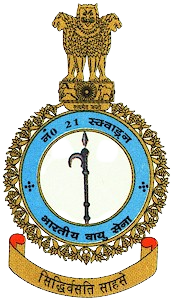NO. 9 SQUADRON

NO. 9 SQUADRON The No. 9 Squadron, Indian Air Force (Wolf pack) was formed at Lahore on January 3, 1944 under the command of Squadron Leader A.W. Ridler of the Royal Air Force. In April 1944 they were moved to Hathazari in Chittagong to take part in the Burma Campaign. Ridler handed over the squadron to Kenneth A Perkin in March 1944 who commanded this squadron until November 1944. Subsequently Adams took over the squadron in November 1944. The squadron has converted to Mirage 2000 and is now based at Gwalior under Central Air Command. The Squadron’s motto is ‘Sahase Wasati Jayashrih’, meaning ‘In Courage Resides Victory'. Its insignia has a pack of wolves in the centre.



